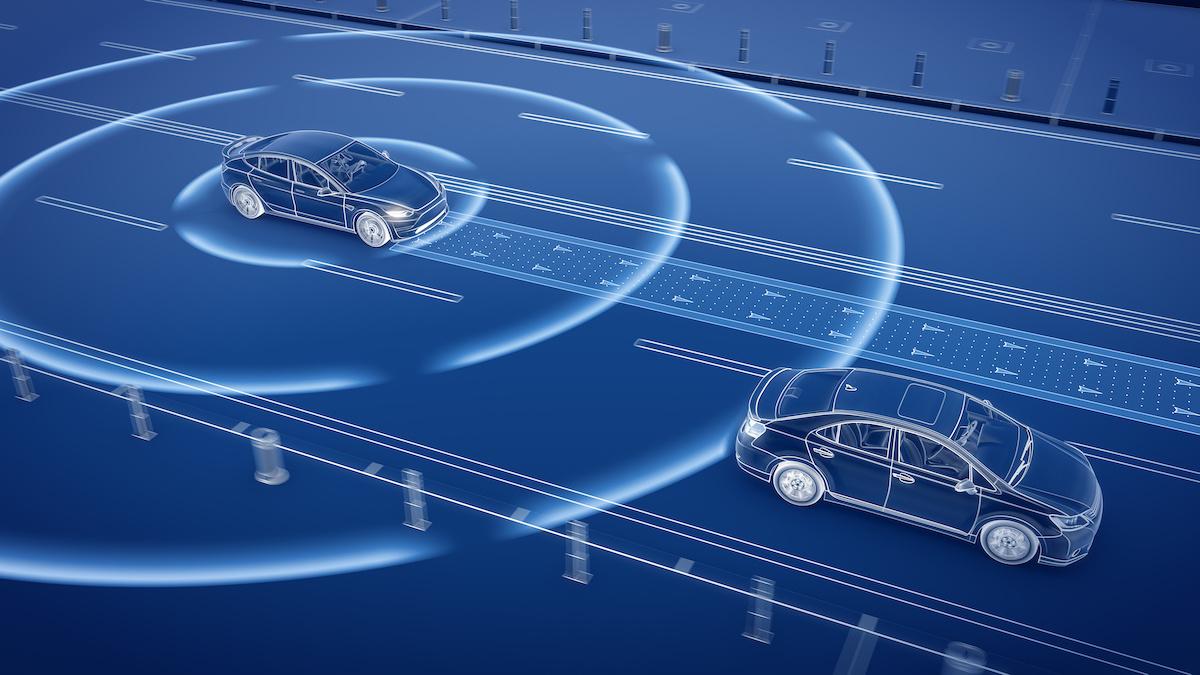Top 10 Advances in Autonomous Car Safety
Explore the latest top 10 breakthroughs improving autonomous car safety and ensuring a safer future on the road.

Autonomous car safety has made significant strides in recent years, promising a future where road accidents become increasingly rare. This advancement isn't just a matter of convenience; it's a leap towards saving lives, with technology at the helm steering us into safer tomorrows. In this article, we'll navigate through the top 10 advances in autonomous car safety, showcasing how innovation and intelligence converge to protect us on the roads.
Exploring the Advances in Autonomous Car Safety
As we dive into the realm of autonomous vehicles (AVs), it's crucial to understand how technology is reshaping safety standards. From artificial intelligence (AI) to advanced sensory equipment, the landscape of autonomous car safety is ever-evolving. These breakthroughs are not just enhancing the way cars drive autonomously but are also setting new benchmarks for vehicle safety.
List of Top Choices
- Machine Learning and AI in Hazard Detection
- Advancements in Sensor Technology
- Laser Imaging Detection and Ranging (LiDAR)
- Vehicle-to-Everything (V2X) Communication
- Enhancing Cybersecurity Measures
- Automated Emergency Braking Systems
- Over-the-Air Software Updates
- Advanced Driver-Monitoring Systems
- Navigating Ethical Decisions with AI
- Evolving Regulations and Safety Standards
Machine Learning and AI in Hazard Detection
- Adaptive Algorithms: Continuously learns and adapts to new driving environments and conditions.
- Predictive Analysis: Anticipates potential hazards by analyzing vast amounts of data in real-time.
- Behavioral Understanding: Deciphers complex human and vehicular behavior on the roads to enhance safety measures.
The integration of machine learning and AI in autonomous cars marks a revolutionary step in hazard detection. These technologies equip vehicles with the ability to process and interpret massive datasets rapidly, enabling them to predict and navigate potential dangers more efficiently than ever before. As these systems learn from vast quantities of real-world driving data, their ability to anticipate and avoid hazards improves over time, offering a dynamic solution to road safety that adapts and evolves with the environment. This means cars can not only react to immediate threats but also anticipate potential risks, adjusting their behavior to prevent accidents before they happen.
Advancements in Sensor Technology
- High-Resolution Cameras: Offer 360-degree visibility around the vehicle, capturing minute details.
- Radar Systems: Provide accurate distance measurements and speed detection of surrounding objects.
- Ultrasonic Sensors: Ideal for close-range detection tasks like parking assistance.
The role of advanced sensor technology in enhancing autonomous car safety cannot be overstated. By combining high-resolution cameras, radar systems, and ultrasonic sensors, autonomous vehicles can achieve a comprehensive understanding of their surroundings. This synergy creates an intricate detection network, allowing cars to see beyond the capabilities of human drivers, including in adverse weather conditions or at night. These sensors are crucial for precise maneuvering and decision-making, significantly reducing the likelihood of accidents by providing detailed insights into the surrounding environment.
Laser Imaging Detection and Ranging (LiDAR)
- High Precision: Offers detailed 3D mapping of the car's surroundings.
- Distance Measurement: Accurately measures distances to objects, enabling safe navigation and positioning.
- Integration with Other Systems: Works alongside cameras and radar to provide a comprehensive view of the environment.
LiDAR technology has proven to be a cornerstone in the advancement of autonomous car safety by providing high-resolution, three-dimensional images of the vehicle's environment. This precision is crucial for understanding complex scenarios and making split-second decisions that could prevent collisions. While LiDAR systems are notably expensive, their ability to enhance detection and navigation justifies the investment, providing an unparalleled level of detail that complements other sensor technologies. By accurately measuring distances and generating detailed maps of surrounding objects, LiDAR plays an indispensable role in the safe operation of autonomous vehicles.
Vehicle-to-Everything (V2X) Communication
- Inter-Vehicle Communication: Allows vehicles to communicate with each other, sharing information about speed, direction, and potential hazards.
- Infrastructure Interaction: Enables cars to interact with traffic signals, road signs, and other elements of infrastructure.
- Enhanced Situational Awareness: Increases overall road safety by providing a broader understanding of the vehicle's environment.
Vehicle-to-Everything (V2X) communication significantly enhances autonomous car safety by enabling cars to "talk" with each other and with road infrastructure. This breakthrough in communication technology allows vehicles to exchange information in real-time, offering a holistic view of the traffic ecosystem. By understanding not only the behavior of nearby vehicles but also the status of traffic signals and road conditions, cars can make more informed decisions, dramatically improving road safety. This collective situational awareness helps reduce the chances of accidents, streamlining traffic flow and paving the way for a more efficient, safer road environment.
Enhancing Cybersecurity Measures
- Encryption Technologies: Protects data exchanged between vehicles and infrastructure from unauthorized access.
- Intrusion Detection Systems: Monitors vehicle systems for signs of malicious activities or breaches.
- Software Integrity Checks: Ensures the software operating the vehicle is secure and hasn’t been tampered with.
In the era of autonomous vehicles, cybersecurity measures are paramount to safeguard against potential digital threats. Advanced encryption technologies are employed to secure the vast amount of data communicated between vehicles and infrastructures, ensuring that sensitive information remains protected. Additionally, intrusion detection systems vigilantly monitor for any signs of cyber-attacks, promptly addressing them to maintain vehicular integrity. Regular software integrity checks further bolster this defensive posture, by verifying that the software guiding autonomous cars is not just up-to-date but also free from tampering. Together, these cybersecurity advancements are critical for preserving the trust and safety of autonomous car operations.
Automated Emergency Braking Systems

- Collision Detection: Utilizes sensors to detect potential collisions and automatically initiates braking.
- Adaptive Response: Adjusts the braking force based on the severity of the detected threat.
- Integration with Other Safety Features: Works in tandem with other autonomous safety systems for comprehensive protection.
The incorporation of Automated Emergency Braking Systems (AEBS) in autonomous vehicles plays a critical role in preventing accidents. By leveraging advanced sensors, these systems can quickly detect imminent collisions and, without hesitation, engage the brakes to mitigate or entirely avoid impact. Perhaps more impressively, AEBS can adapt the intensity of their response based on the immediate threat, providing an optimal level of protection without overreacting to false alarms. Integrated seamlessly with other autonomous vehicle safety features, these systems exemplify the multi-layered approach to safety that is becoming the standard in the industry.
Over-the-Air Software Updates
- Continuous Improvement: Allows vehicles to receive the latest software updates without needing to visit a dealership.
- Security Patching: Quick distribution of security updates to protect against new vulnerabilities.
- Feature Enhancements: Introduces new functionalities and improvements to existing systems over time.
Over-the-Air (OTA) software updates are transforming how autonomous vehicles are maintained, ensuring they remain at the cutting edge of safety and performance. This technology enables cars to download the latest software improvements directly, eliminating the need for physical service appointments. Not only does this approach allow for rapid deployment of critical security patches, but it also facilitates the continuous enhancement of vehicle features and capabilities. As a result, OTA software updates significantly contribute to the longevity and safety of autonomous vehicles, ensuring they adapt and evolve in response to new advancements and threats.
Advanced Driver-Monitoring Systems

- Attention Monitoring: Detects signs of driver distraction or fatigue, issuing alerts when necessary.
- Adaptive Control Adjustment: Can temporarily take control or adjust vehicle settings to ensure safety.
- Integration with Autonomous Systems: Provides a safety net when manual control is in use.
Even in the world of autonomous driving, the importance of monitoring the human driver remains paramount. Advanced Driver-Monitoring Systems (DMS) utilize a combination of cameras and sensors to constantly assess the driver's alertness and readiness to take control if needed. By identifying patterns of distraction or fatigue, these systems can alert the driver through various signals, helping to avert potential dangers. In situations where the driver does not respond, the system can even temporarily intervene by adjusting the vehicle's controls to maintain safety. This seamless integration with autonomous systems ensures a harmonious balance between human and machine, emphasizing the shared responsibility in maintaining road safety.
Navigating Ethical Decisions with AI
- Moral Algorithms: Incorporates ethical considerations into decision-making processes.
- Scenario Simulation: Uses complex simulations to train AI on various ethical dilemmas.
- Stakeholder Engagement: Involves the public and ethicists in the development of ethical guidelines for AI behavior.
As autonomous vehicles increasingly rely on artificial intelligence for decision-making, the integration of ethics into AI systems has become a growing concern. Developers are tasked with programming moral algorithms that can navigate complex ethical dilemmas on the road. By employing scenario simulations, AI can be trained to evaluate the consequences of different actions and choose the most ethically sound course. Engagement with ethicists, policymakers, and the general public ensures that these decisions align with societal values, creating a framework for AI that not only prioritizes safety but also moral responsibility.
Evolving Regulations and Safety Standards

- International Collaboration: Countries are working together to establish consistent regulations for autonomous vehicles.
- Adaptability: Regulations are designed to evolve along with technological advances.
- Safety Certification: Introduces rigorous testing and certification processes to ensure vehicle safety.
The landscape of autonomous vehicle regulation is an evolving field, requiring international collaboration to establish consistent and effective safety standards. As technology advances, these regulations are designed to adapt, ensuring that new innovations and developments are adequately governed. Through the introduction of rigorous testing and certification processes, governments and regulatory bodies aim to guarantee that autonomous vehicles meet the highest safety standards before hitting the road. This approach not only promotes innovation within a defined ethical framework but also instills public confidence in the safety and reliability of autonomous vehicles.
In conclusion, the top 10 advances in autonomous car safety demonstrate the automotive industry's commitment to harnessing technology for the betterment of road safety. From machine learning and advanced sensor technology to ethical AI and evolving regulations, these innovations offer a glimpse into a future where roads are safer for everyone. As autonomous vehicles continue to evolve, integrating these advancements will be crucial in mitigating risks, enhancing security measures, and paving the way for the widespread adoption of autonomous driving. With ongoing research, collaboration, and regulatory support, the journey toward safer autonomous transportation looks promising, highlighting a shared goal of reducing accidents and saving lives on a global scale.
What's Your Reaction?




























































